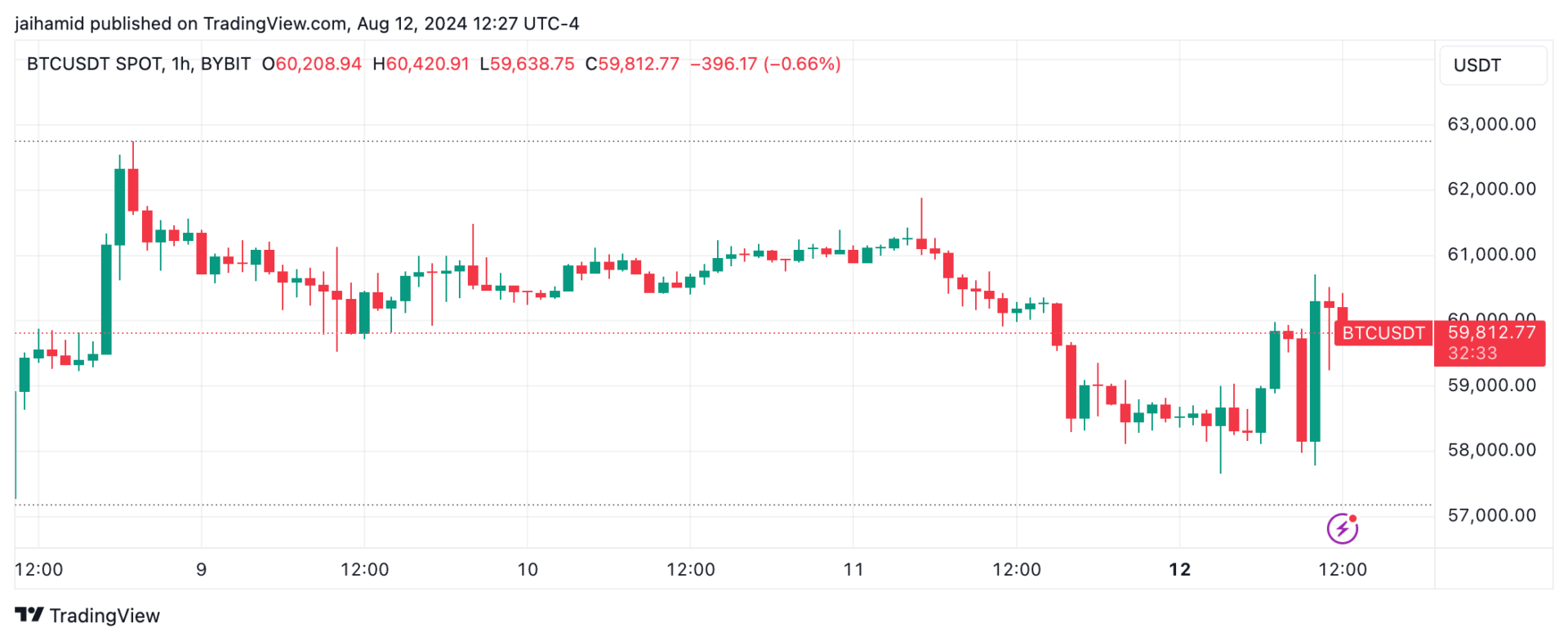Bitcoin’s price has been on a bumpy ride, with last week’s market drop shaking things up. While the price has somewhat recovered, Bitcoin is still clinging to that $60,000 mark. Traders are on edge, trying to figure out what’s next.
The big news? QCP Capital tells us it’s the BTC put skew, which was a wild -25% during the chaos, has calmed down to -5%. But don’t get it twisted—things are still shaky, and the market isn’t exactly throwing a party yet.
In April and June, Bitcoin faced two other massive drops but managed to bounce back above $70,000 in under a month.
This time, with BlackRock showing consistent positive inflows all week, there’s hope that U.S. investors will keep the cash flowing and help stabilize things. But we’re not out of the woods yet.
The market is still cautious, especially with some major events on the horizon that could tip the scales in either direction.
Market jitters for Bitcoin ahead of big events
All eyes are on two big upcoming events: Elon Musk’s interview with Donald Trump, set for 8 p.m. ET, and the U.S. Consumer Price Index (CPI) report due on Wednesday. These two events are likely to inject some volatility into the market.
The interview could stir up some chaos, depending on what Elon and Trump decide to throw out there, while the CPI report will give us a clearer picture of inflation and how it’s affecting the economy.

According to QCP Capital, while Asian equity markets have seen some support today, the global market shakeup has intensified uncertainty about the future of the economy.
On one side, there’s fear of a U.S. recession, which is making investors nervous about taking risks. On the other, expectations for rate cuts are tempting dip buyers back into the game. At the time of writing, Bitcoin’s spot price is $59,812.

Is the recession coming?
Bitfinex analysts point out that the fear of a global recession is not just talk—it’s very real. The latest economic indicators and central bank actions are ringing alarm bells.
Over the last three months, central banks have slashed rates 35 times, surpassing the rate cut levels of early 2024.
This kind of proactive easing brings back memories of the 2009 financial crisis when central banks made 76 rate cuts at the peak of the chaos.
Several factors are fueling these recession fears. First, economic growth is still limping along, with inflation showing only slight improvement.

The International Monetary Fund (IMF) forecasts a minor decline in global growth to 2.9% in 2024, down from 3% in 2023.
This sluggish growth, combined with persistent inflation, suggests that central banks are scrambling to keep the economy from slipping further into a downturn.
Debt maturities and market sentiments are also painting a grim picture. A substantial amount of speculative-grade debt is set to mature in the U.S. in 2024, and falling bond yields aren’t helping.
Investors are flocking to safer assets, and the decline in yields is a classic sign that confidence in sustained economic growth is fading fast.

Bitfinex analysts warn that this fear of an economic recession could have mixed effects on Bitcoin and the broader crypto market. On one hand, Bitcoin might actually benefit as a safe haven asset.
When the economy gets shaky, investors tend to look for something solid to hold onto, and Bitcoin has been dubbed “digital gold” for a reason. Increased demand could be on the horizon as traditional markets face more turbulence.
But it’s not all sunshine and rainbows. The broader crypto market, particularly altcoins, could take a hit.
With liquidity drying up and risk appetite dwindling, investors might start pulling their money out of high-risk assets like smaller cryptocurrencies and parking it in safer investments. It’s a double-edged sword.





